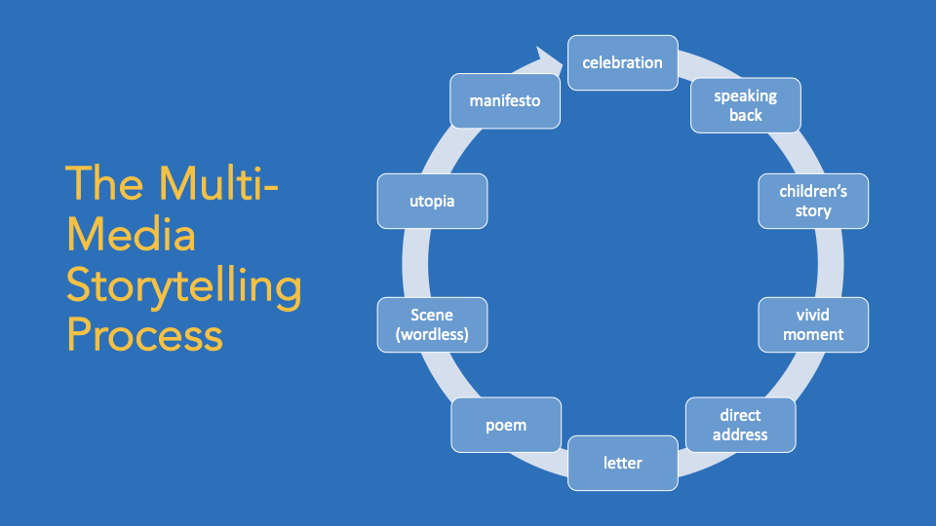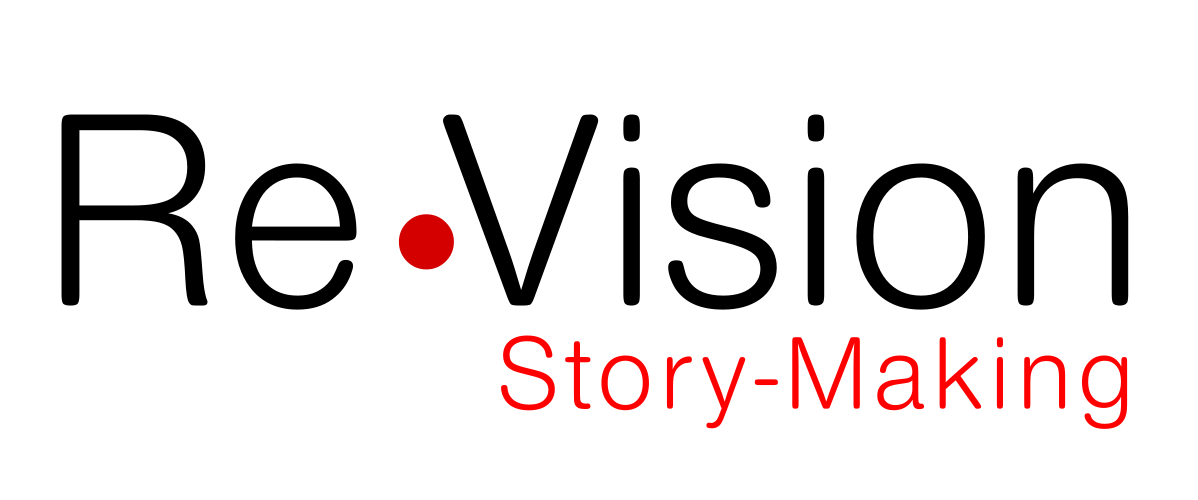
Writing Prompts
Re•Vision’s digital storytelling process usually begins and ends with the sharing of stories in community.
Many of the workshops begin with an initial writing prompt exercise, where participants are asked to engage in free writing for a short period of time, in response to a story prompt or prompts.
The prompts can relate to an object participants bring into the workshop space, to a moment in time, to a specific feeling, and they can help participants to focus and deepen the story they wish to tell.
Examples of story prompts
- What objects tell the story of your experiences of disability?
- What sounds or images come to mind when thinking about inclusion?
- Describe your utopia or dystopia relating to housing?
- Tell the story of your most vivid exclusion or inclusion experience related to parenting.
Free Writing or Automatic Writing
Free writing or automatic writing requires the storyteller to sit with a story prompt or prompts and to write for 8-10 minutes without lifting the pen from the page. The goal is to write down everything that comes to mind without editing or judging.
The following concepts are adapted from Writing Down the Bones: Freeing the Writer Within:
Keep your hand moving. (Don’t pause to reread the line you have just written)
Don’t cross anything out. (That is editing as you write, even if you write something you don’t mean to write, keep it)
Don’t worry about spelling, punctuation and grammar.
Try not to judge what you’re writing.
Try to encounter that which makes you uncomfortable without deleting it.
Natalie Goldberg (2016)
Some short prompts that can be used for repetitive writing. Start each sentence with one of these lines. Try to keep writing for 8 minutes. Try not to stop and think, even if this means you are just writing “umm umm” for parts of it.
- You’d never believe me…
- I dream…
- Why…
- What makes me angry is…
- What I mean by…
- What if I knew…
- What I need to remember…/What you need to remember
- You…
- They told me…
- I told myself
- What I understand now…/If I only knew then
- I’ve learnt…
A graphic showing the many ways to think about telling a story. Storytellers are encouraged to move away from the dominant, colonial understanding of story as having a beginning, middle, and end with a clear resolution.

Sharing Feedback
After the free writing exercise, participants come together and have the opportunity to share what they have written with each other and ask for feedback from the group.
Facilitators provide guidelines for feedback adapted from Lerman (2021) Critical Response Process. The aim is to support or thicken the story, participants are coached not to give advice or critique, rather to support the burgeoning story.
Participants offer feedback about what was meaningful, evocative, interesting, exciting and striking in the story. They can also provide a visual response, an image that came to them while listening to the story. Often the images find their way into the completed digital story.
References Goldberg, N. (2016). Writing down the bones: Freeing the writer within (Thirtieth anniversary edition). Shambala. Lerman, L. (2021). Liz Lerman’s critical response process: A method for getting useful feedback on anything you make. Liz Lerman Dance Exchange.


